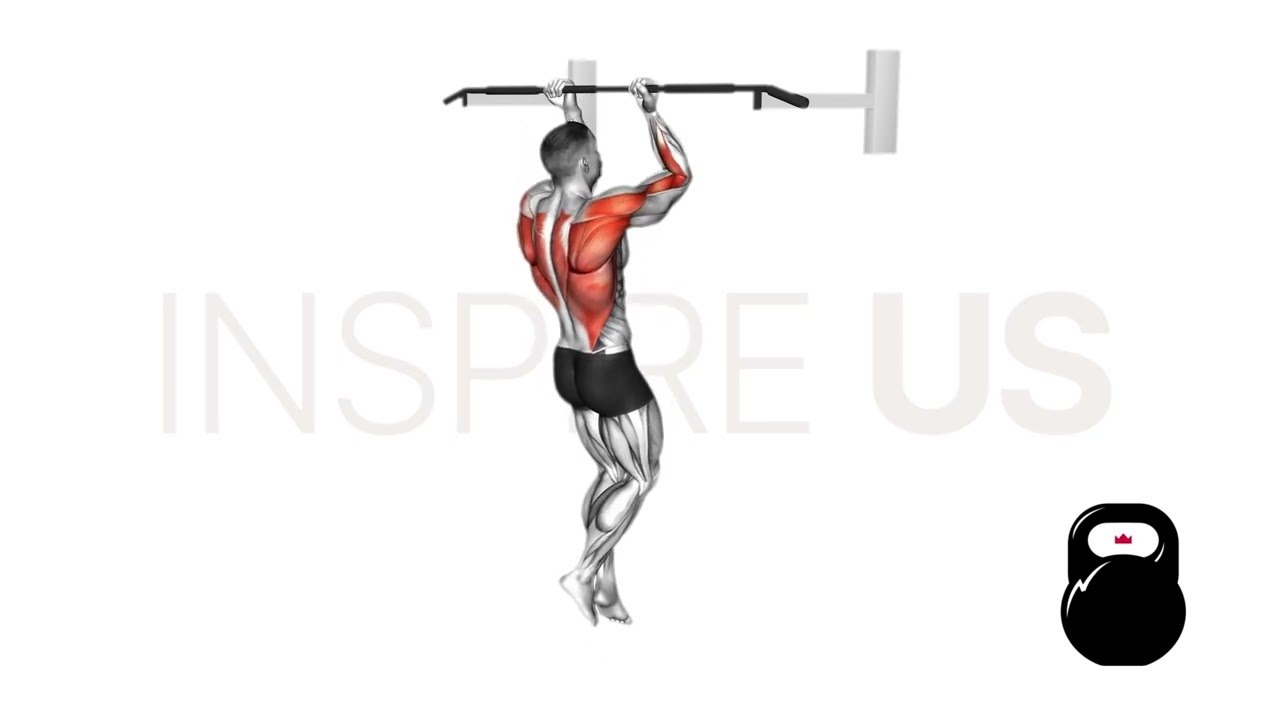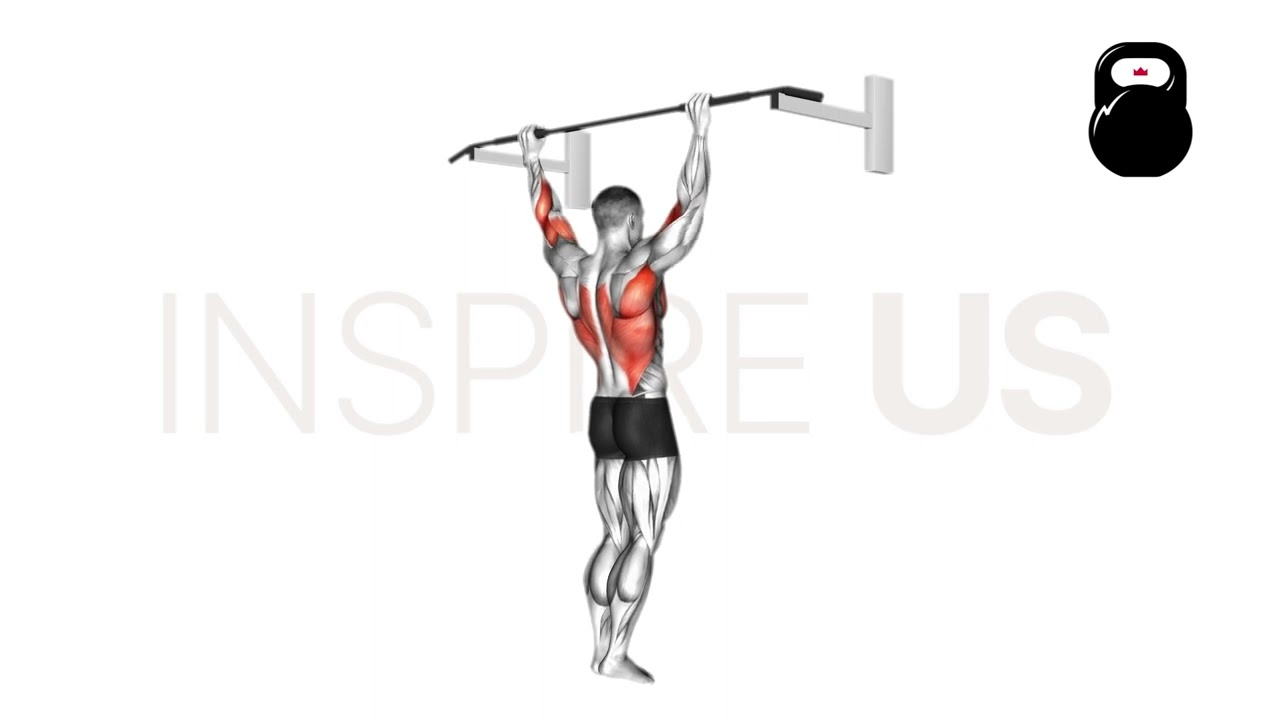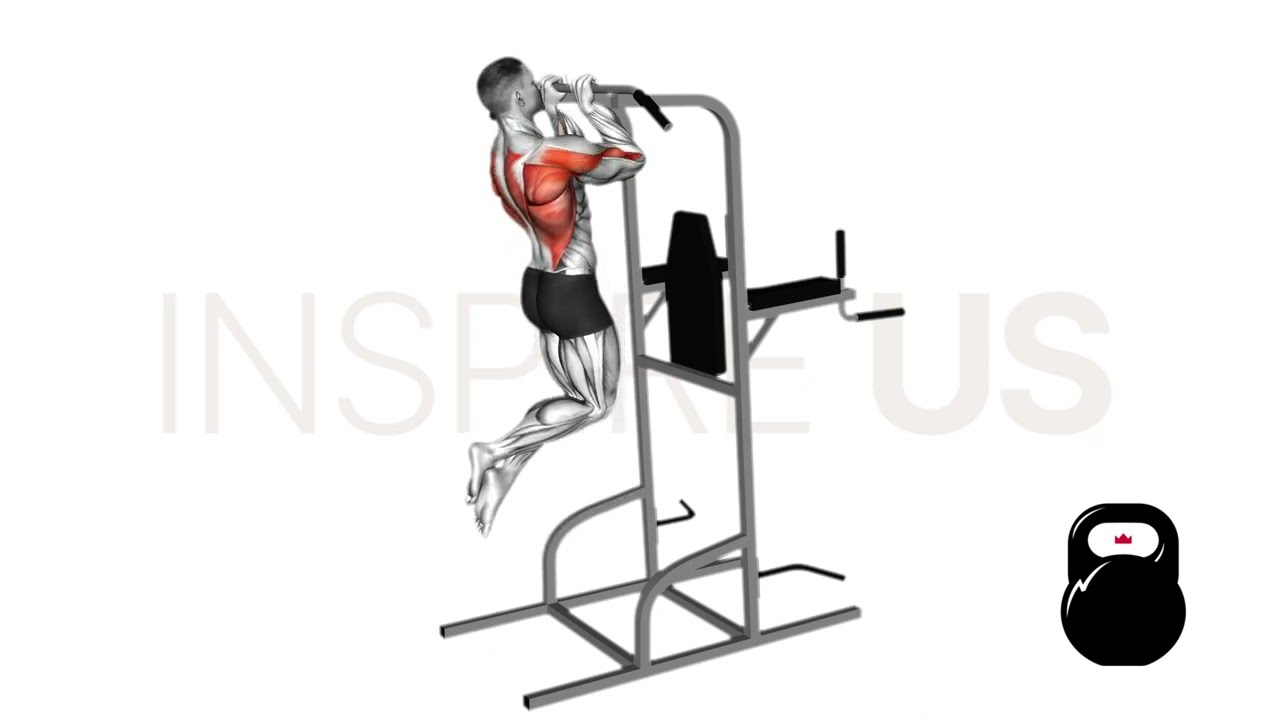Best Pull Up Grips: Based on Target Muscle
Pull-ups are the bread and butter of bodyweight training - targeting a large range of muscles from the massive latissimus dorsi to the oft-undertrained forearm flexor muscle group.
Here are popular grips/variations that can target various musculature:
- Biceps = Chin Ups
- Outer Lats = Wide Grip Pull Ups
- Mid Back = Close Grip Pull Ups
- Upper Trapezius and Forearm Flexors = Neutral Grip Pull-Ups
Best Pull Up Grip for Targeting Various Musculature
For Hitting the Biceps: Chin-Ups
Adopting an underhand or supinated grip transforms the conventional pull-up into the more biceps-focused chin-up.

Though the chin-up replicates the pull-up in practically every aspect, the closer and more supinated grip reduces emphasis on the latissimus dorsi. Instead, the biceps, mid-back and pectorals (to some small degree) are targeted to a greater extent.
Equipment Needed
Chin-ups will require either a straight pull-up bar or a pair of gymnastic rings positioned overhead.
Sets and Reps Recommendation
Like most other bodyweight exercises, programming the chin-up is highly individual and will depend on your current physical capabilities.
However, knowing this, the 3-5 sets of 6-12 repetitions should be a good baseline for the majority of novice and intermediate exercisers.
Common Mistakes to Avoid
It’s not uncommon for lifters performing chin-ups to neglect proper scapular engagement in exchange for a focus on elbow flexion. This is a mistake, and can make each repetition significantly more difficult than need be.
In order to perform a chin-up correctly, lifters should ensure that their shoulder blades are retracting as they pull their trunk upwards.
How-to:
- To perform a repetition of the chin-up, the lifter begins by hanging by their hands from a pull-up bar, palms facing inwards within shoulder-width apart. The legs should be entirely stationary throughout the set, core and glutes squeezed and the scapula neutrally positioned.
- From this stance, the lifter then contracts their lats and pulls their torso upwards - allowing the head and upper back to move slightly backwards so as to better engage the back muscles.
- With the head and neck cleared over the top of the bar, the apex of the movement has been reached. The lifter may then complete the repetition by slowly descending back downwards in a reversal of the concentric portion.
For Working the Outer Lats: Wide Grip Pull-Ups
Just as how a close supinated grip targets the biceps to a greater degree, so too does a wide pronated grip achieve the opposite effect - greater latissimus dorsi emphasis.
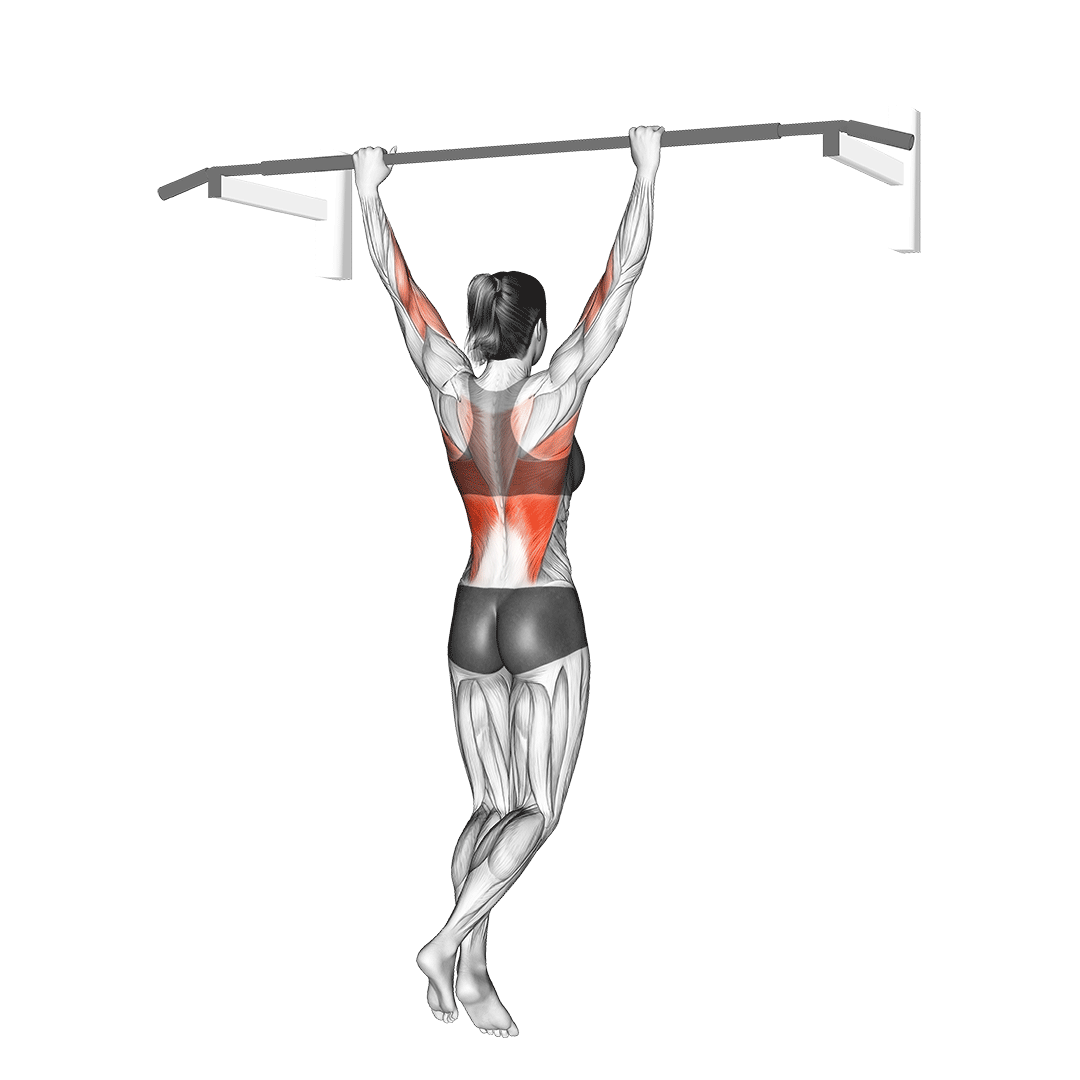
Though all forms of pull-up do target the lats to some degree, wide grip pull-ups take things to the next level by greatly reducing the involvement of the biceps, trapezius and other secondary muscle groups.
Equipment Needed
A sufficiently long enough pull-up bar will be needed to accommodate the wider than usual grip used.
Sets and Reps Recommendation
Depending on how much of your pull-up technique relies on your secondary mover muscles, wide grip pull-ups can be either easier or harder than conventional pull-ups.
Whether you’re a novice or testing whether a wide grip is right for you, starting with 3-5 sets of 6-10 repetitions is best.
Common Mistakes to Avoid
Though the grip used is indeed meant to be significantly wider than shoulder-width apart, avoid setting the hands so far apart that elbow flexion is minimized. Apart from being entirely inefficient, an exceedingly wide grip width will also greatly increase strain placed on the shoulder joint and rotator cuffs.
How-to:
- To perform a repetition of the wide grip pull-up, the lifter will begin by reaching upwards and hanging from a pull-up bar, hands set one-and-a-half the width of their shoulders.
As always, the glutes and core must be engaged to create a rigid and stable body. - From this stance, the lifter proceeds to perform the pull-up as normal by contracting their lats and pulling their chest upwards towards the bar. Remember to retract the scapula as the torso rises upwards.
- With the head raised over the bar, the lifter simply reverses the movement and allows their body to descend back towards the floor.
- Once the arms are fully extended and the body has returned to its starting position, the repetition is considered to be complete.
For Targeting the Mid-Back Muscles: Close Grip Pull-Ups
Whether the lower and middle trapezius, the rhomboids, the teres muscles or the infraspinatus - selecting a narrower pronated grip when doing pull-ups is the way to go.

Like the latissimus dorsi, each of these individual muscles is targeted regardless of what variant of pull-up is being performed. However, setting the hands closer together helps the lifter properly engage them to a greater degree while simultaneously shifting the distribution of resistance away from the latissimus dorsi.
Equipment Needed
Close grip pull-ups will require a straight pull-up bar - preferably in the form of two separate handles, as this will allow the trunk to move along a more vertical path.
Sets and Reps Recommendation
Close grip and conventional pull-ups are approximately the same in terms of intensity and fatigue accrual.
A direct 1:1 transfer of programming is completely feasible - but opting for 2-4 sets of 6-12 repetitions may be adopted instead.
Common Mistakes to Avoid
Internal rotation of the shoulder or hunching of the upper back are particularly common mistakes sought with close grip pull-ups. To avoid these issues, ensure the scapula is never protracted at any point of the repetition, and that the chest is “puffed out” throughout the set.
How-to:
- Performing a repetition of close grip pull-ups is practically identical to performing a conventional pull-up.
The lifter begins by reaching upwards and suspending themselves from a pull-up bar, their hands in a pronated orientation somewhat narrower than shoulder-width apart. - Initiating the pull by contracting the lats, the lifter bends their elbows out to the sides and tucks them against the ribs as the trunk moves upwards.
Unlike with a conventional pull-up, the shoulder blades retract quite early in the repetition, and will remain retracted even before reaching the midpoint of the movement. - When the head has been raised over the pull-up bar, the lifter reverses their path and allows their arms to extend back overhead as the scapula disengages. The repetition is now complete.
For Training the Upper Trapezius and Forearm Flexors: Neutral Grip Pull-Ups
Neutral grip pull-ups are excellent for creating a greater focus on the brachialis, brachioradialis and the upper section of the trapezius muscles.
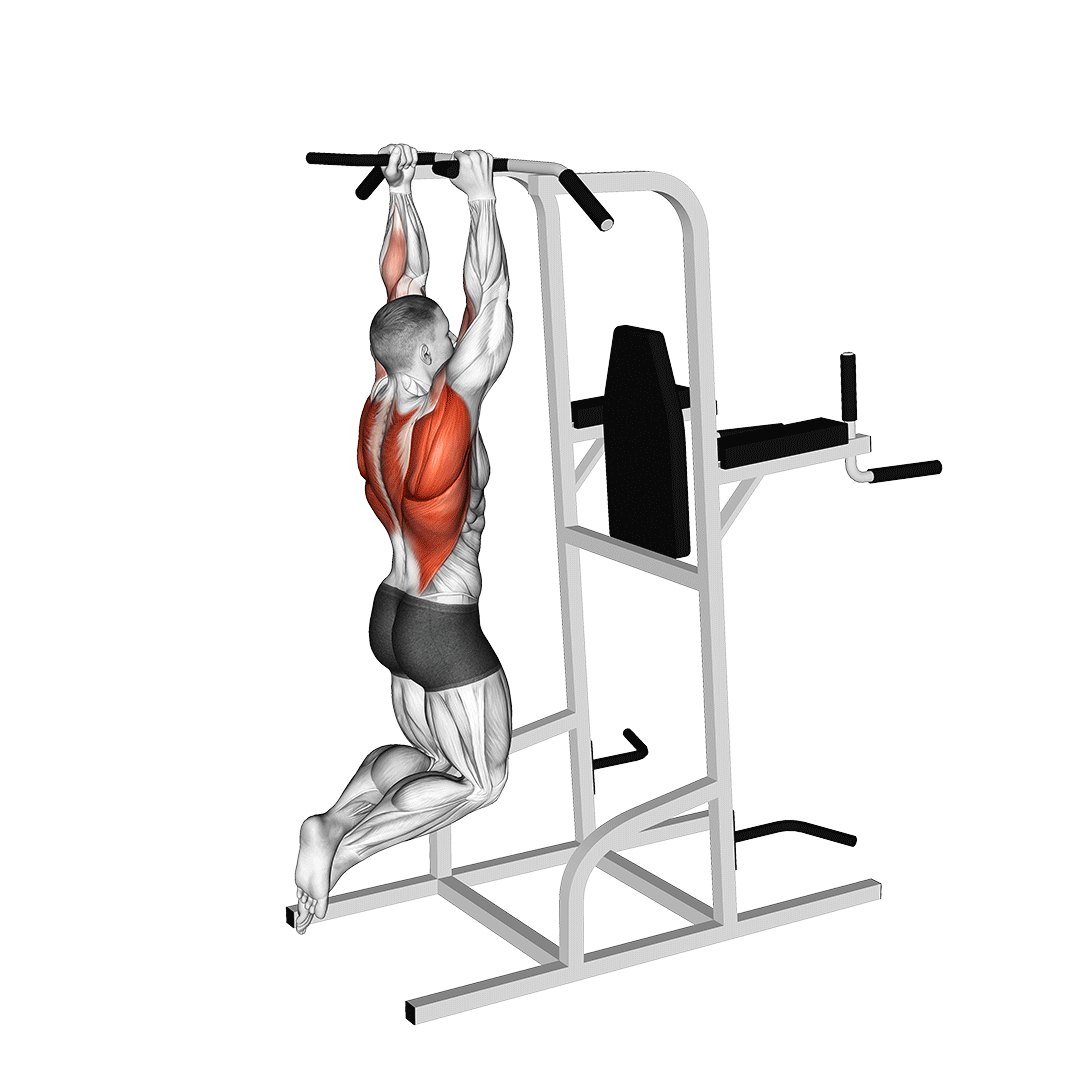
It achieves this shift in emphasis by having the palms face one another as the hands are set within shoulder-width distance. Like close grip pull-ups, the neutral grip variant reduces the involvement of the latissimus dorsi but is otherwise mechanically identical.
Equipment Needed
Neutral grip pull-ups will require a pair of parallel bars, rather than a straight pull-up bar.
Sets and Reps Recommendation
Depending on how arm-dominant your physiology is, neutral grip pull-ups may be easier than conventional pull-ups.
As such, 3-5 sets of 8-16 repetitions should be a sufficiently intense starting range for novices and intermediates.
Common Mistakes to Avoid
As is the case in both close grip pull-ups and chin-ups, ensure that the elbows do not get in the way of the trunk so as to maximize range of motion.
Draw the elbows out to the sides after performing the initial pull through the back - though care must be taken not to flare them immediately outwards, as this can impinge the shoulders.
How-to:
- To perform a neutral grip pull-up, the lifter positions their hands directly over their body along the parallel bars, facing their palms towards one another.
- Initiating the first pull by squeezing their lats and pulling their chest upwards towards the bars, the lifter proceeds to bend at the elbows and engage their forearm flexor muscles as the upper arms bend parallel to the shoulders.
The elbows themselves should tuck close to the sides, rather than close together at the front of the torso. - Once the lifter has raised themselves high enough that the bar is beneath their chin, they simply reverse the movement so as to complete the repetition.
What Type of Pull-Up Grip is Best?
Unless performing pull-ups as a secondary compound movement, you should specifically select a grip that emphasizes the weakest muscles in your upper body.
For weak arms, chin-ups, or a neutral grip are superior. For the lats or mid-back, a wide grip or close grip are the better choice, respectively.
References
1. Leslie, Kelly & Comfort, Paul. (2013). The Effect of Grip Width and Hand Orientation on Muscle Activity During Pull-ups and the Lat Pull-down. Strength and Conditioning Journal. 35. 75-78. 10.1519/SSC.0b013e318282120e.

